フィールド日記
2024年02月
2024.02.27
シイタケ
2年前に高校1年生が植菌したホダ木からシイタケが発生していました。数日続いた雨で一気に成長したようです。このような原木栽培では春と秋の年2回収穫することができます。

2024.02.23
アセビ
アセビが咲いています。山地に自生するほか、公園などにも良く植えられる身近な木ですが、漢字では馬酔木と書き、食べた馬が中毒で酔ったようになる有毒植物であることを示しています。写真の個体は花が赤味を帯びている園芸品種で、ベニバナアセビと呼ばれています。
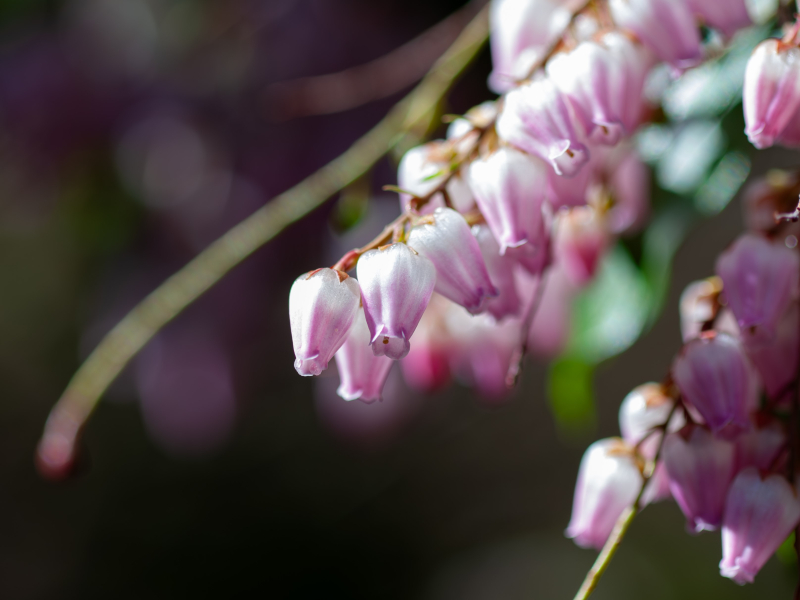
2024.02.20
カワヅザクラ
カワヅザクラが咲いています。2月ごろから咲き始める早咲きの品種です。1955年ごろ、名前の由来となった静岡県河津町で偶然発見された品種です。また、比較的花が咲いている期間が長く、約1か月ほど花を楽しむことができるのも特徴です。
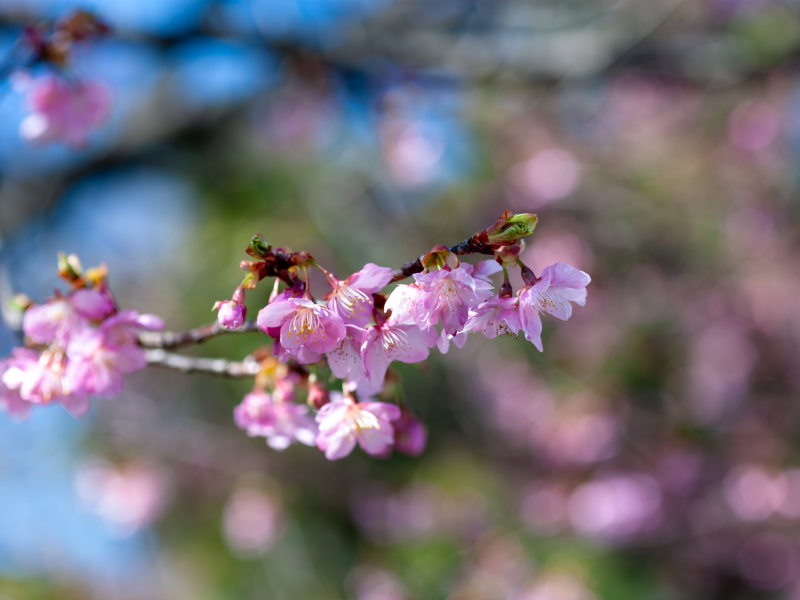
"Kawazu-Zakura (カワヅザクラ)" trees are in bloom. They are early-blooming cherry blossoms that start to bloom in February. Around 1955, the origin of this variety was found by chance in Kawazu, Shizuoka, which became a part of its name. They bloom relatively for a long time, so we can enjoy the flowers for almost a month.
2024.02.16
カワラタケ
カワラタケが生えていました。枯れ木の上に生える最も一般的なきのこの1つです。傘の表面は褐色や濃青色、黒色など多様性があり、短い毛に覆われています。和名は重なり合って群生する様子を瓦に見立てたものと思われます。
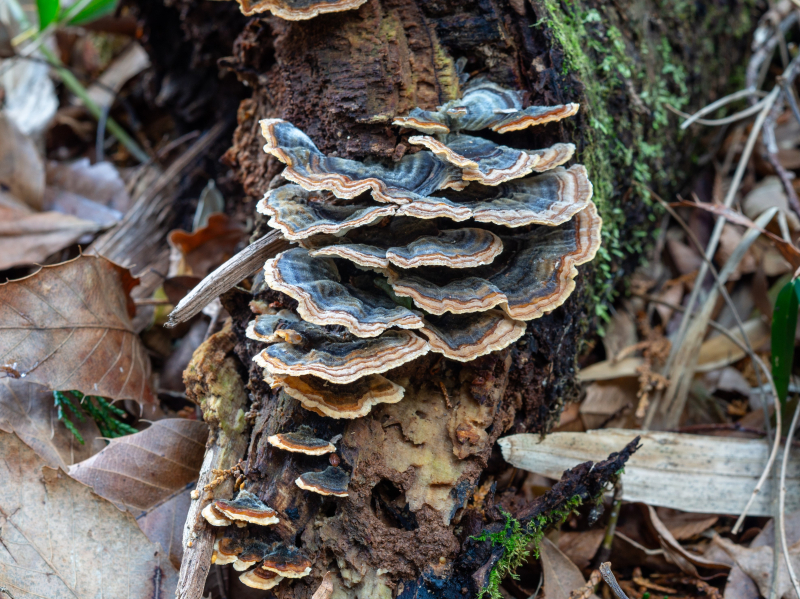
"Kawaratake (カワラタケ)" mushrooms are growing. They are one of the most common mushrooms growing on the dead wood. The color on their caps has varieties like dark brown, dark blue and black. They are also covered with short hair. The name comes from the fact that the way they grow overlapping each other looks like roof tiles.
2024.02.13
ウラベニガサ
ウラベニガサが生えていました。春から秋にかけて広葉樹の枯れ木に生えるきのこです。傘や柄には繊維模様が見られます。和名は、傘の裏側のひだが、初めは白色ですがのちに薄い紅色に変化することに由来するようです。
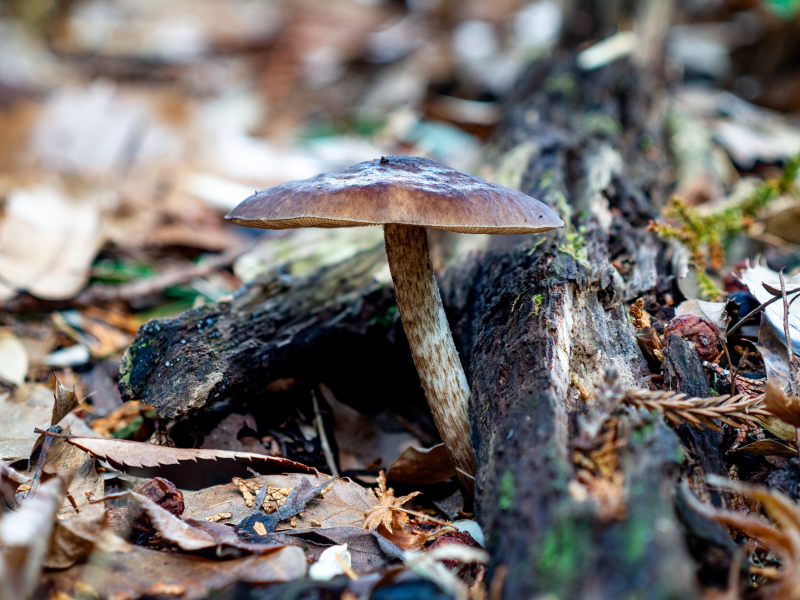
A "Urabeni-Gasa (ウラべニガサ)" mushroom is growing. This mushroom grows on the dead woods of broadleaf trees from the spring to the fall. You can see the fiber patterns on their caps and stalks. The name comes from the fact that the gills on the back of their caps turn to white and later to light pink.
2024.02.09
タネツケバナ
タネツケバナが咲いています。田んぼの近くでよく見られますが、道端などにも見られます。和名は種漬花で、イネの種を水につけて苗を育てる準備をする時期に咲くことが由来といわれています。都市部ではより乾燥に強いヨーロッパ原産のミチタネツケバナがよく見られます。
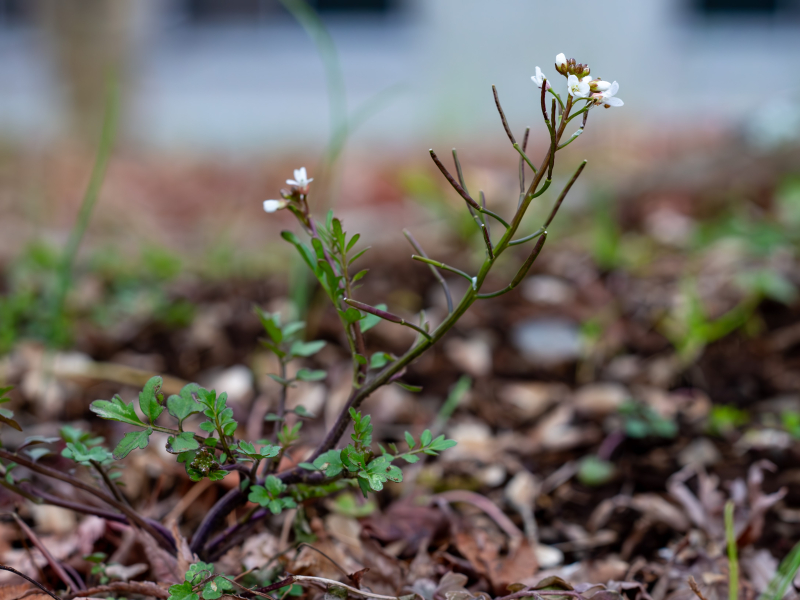
"Tanetsuke-Ban (タネツケバナ)" plants are in bloom. They are often seen around rice fields but sometimes on roadsides. The name comes from the fact that they bloom in the season when people in the past put rice seeds in water to prepare for growing rice seedlings. In the cities, we see their relative plant more often called "Michi-Tanetsuke-Bana (ミチタネツケバナ)," which is resistant to dryness and originally came from Europe.
2024.02.06
オニシバリ
オニシバリが咲いています。ジンチョウゲの仲間の落葉小低木です。落葉樹は冬に葉を落とすものが多いですが、オニシバリは夏に落葉して、秋に新しい葉が展開するという変わった特徴を持っています。和名は、鬼が縛れるほど強靱な樹皮をもつという意味です。

"Oni-Shibari (オニシバリ)" trees are in bloom. They are deciduous shrubs belonging to the "Jinchoge (ジンチョウゲ)" Family. Many deciduous trees fall their leaves in winter, but "Oni-Shibari" trees do it in summer and sprout new leaves in fall. The name "Oni-Shibari" means "Tying up demons" and it comes from the fact that their barks are so strong as if we could tie up demons with them.
2024.02.02
ヒメジョウゴゴケ
駐車場近くの岩の上にヒメジョウゴゴケが見られます。地衣類の仲間で、低地から山地まで広く分布しています。岩の上や地上、樹木の基部などに見られます。名前の由来となった、カップ状のつくり(子柄)が特徴ですが、正確な同定には薬品に対する反応を確かめる必要があるようです。

"Hime-Jougo-Goke (ヒメジョウゴゴケ)" grows on the rocks near the parking area. They are lichens that are found in plains and mountains. They grow on rocks, grounds and the base of trees. The cup-shaped structure is their characteristic that their name comes from. However, it seems to be necessary to see the reaction to chemicals in order to accurately tell Hime-Jougo-Goke from other relatives.
- 1 / 1

















